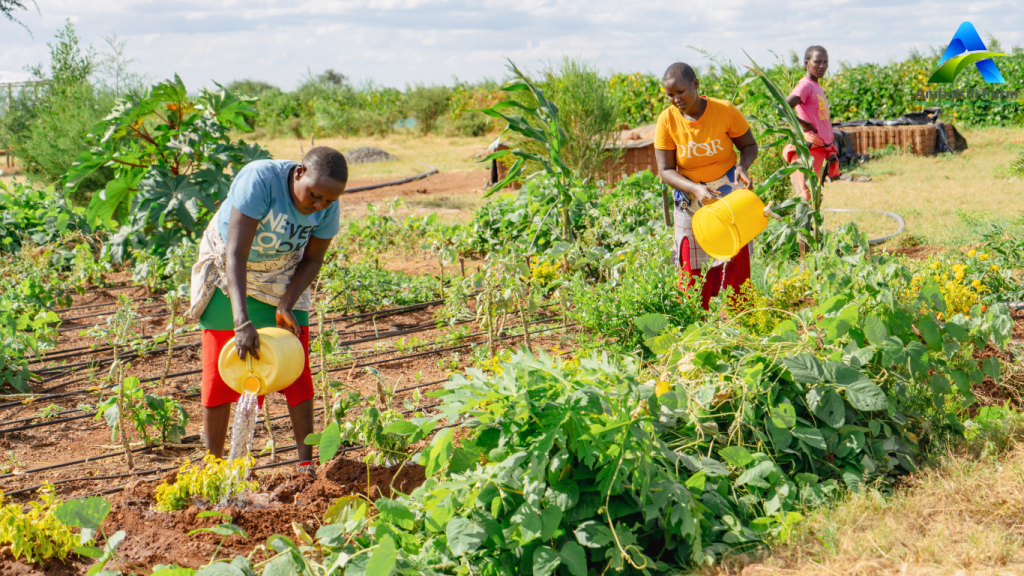
Water is life, especially in agriculture. In regions like Kimana, where Ambokili Farm is located, water scarcity poses a significant challenge to farming. Yet, even in these arid and semi-arid areas, farmers are finding innovative ways to conserve this precious resource. At Ambokili Farm, we believe in empowering every farmer with knowledge and practical solutions that are rooted in both wisdom and common sense. Here are ten effective strategies farmers are using to save water in dry areas, with examples from our practices at Ambokili Farm.
1. Drip Irrigation: Precision Watering
Drip irrigation is a highly efficient method of watering plants by delivering water directly to the roots through a network of tubes and emitters. This method minimises water loss due to evaporation and runoff. At Ambokili Farm, we’ve implemented drip irrigation systems across our farm, ensuring that every drop of water is used efficiently. Studies have shown that drip irrigation can reduce water usage by up to 60% compared to traditional irrigation methods.
2. Mulching: Protecting Soil Moisture
Mulching involves covering the soil with organic materials like grass, leaves, or crop residues. This practice helps to retain soil moisture by reducing evaporation, suppressing weed growth, and regulating soil temperature. At Ambokili Farm, we use mulching extensively, especially during the dry seasons, to keep the soil moist and reduce the need for frequent watering.
3. Rainwater Harvesting: Capturing Every Drop
In dry areas, capturing and storing rainwater can make a significant difference. Water collected by rainwater harvesting systems and stored can be used during the dry season. It can be used for irrigation during dry periods, reducing the reliance on groundwater and other sources.
4. Soil Moisture Monitoring: Smart Farming
Using technology to monitor soil moisture levels allows farmers to water their crops only when necessary. This approach is both wise and practical, ensuring that we use water only when our crops truly need it.
5. Cover Cropping: Enhancing Soil Health
Cover cropping involves planting crops that are not necessarily for harvest but to protect and enrich the soil. These crops improve soil structure, reduce erosion, and enhance the soil’s ability to retain moisture. At Ambokili Farm, cover crops like legumes e.g. Mucuna Bean, are used to improve soil fertility and water retention, making the land more resilient to drought.
6. Drought-Resistant Crops: Adapting to the Environment
Choosing the right crops is crucial in water-scarce regions. Drought-resistant crops, such as sorghum and millet, require less water and are more tolerant of dry conditions. Ambokili Farm has diversified its crop selection to include these resilient varieties, ensuring food security even during periods of low rainfall.
7. No-Till Farming: Conserving Soil and Water
No-till farming involves growing crops without disturbing the soil through ploughing. This method helps to maintain soil structure, reduce erosion, and increase the soil’s ability to retain moisture. At Ambokili Farm, we practice no-till farming to conserve both soil and water, fostering a healthier ecosystem.
8. Greywater Recycling: Maximising Water Use
Greywater recycling involves reusing water from household activities such as washing dishes or laundry for irrigation. While this practice is more common in residential settings, Ambokili Farm has explored ways to integrate water recycling into our operations, particularly wastewater from farm activities like aquaculture.
9. Contour Farming: Managing Water Flow
Contour farming involves plowing along the contours of the land to reduce soil erosion and water runoff. This technique is especially effective in hilly or sloped areas. At Ambokili Farm, we have implemented Fanya Juu and Fanya Chini contour farming practices to manage water flow more effectively, ensuring that water stays on the land longer, nourishing our crops.
10. Community Collaboration: Sharing Resources and Knowledge
Water conservation is not just an individual effort; it requires community collaboration. At Ambokili Farm, we work closely with the local community, sharing knowledge and resources to collectively address water scarcity. By pooling resources and learning from each other’s experiences, we create a stronger, more resilient farming community.
A Sustainable Future through Water Conservation
Water scarcity is a pressing issue in many parts of the world, but with the right strategies, farmers can overcome this challenge. At Ambokili Farm, we are committed to promoting and implementing water-saving practices that are both wise and practical. By embracing these techniques, farmers in dry areas can ensure the sustainability of their operations, protect the environment, and secure their livelihoods for generations to come.





